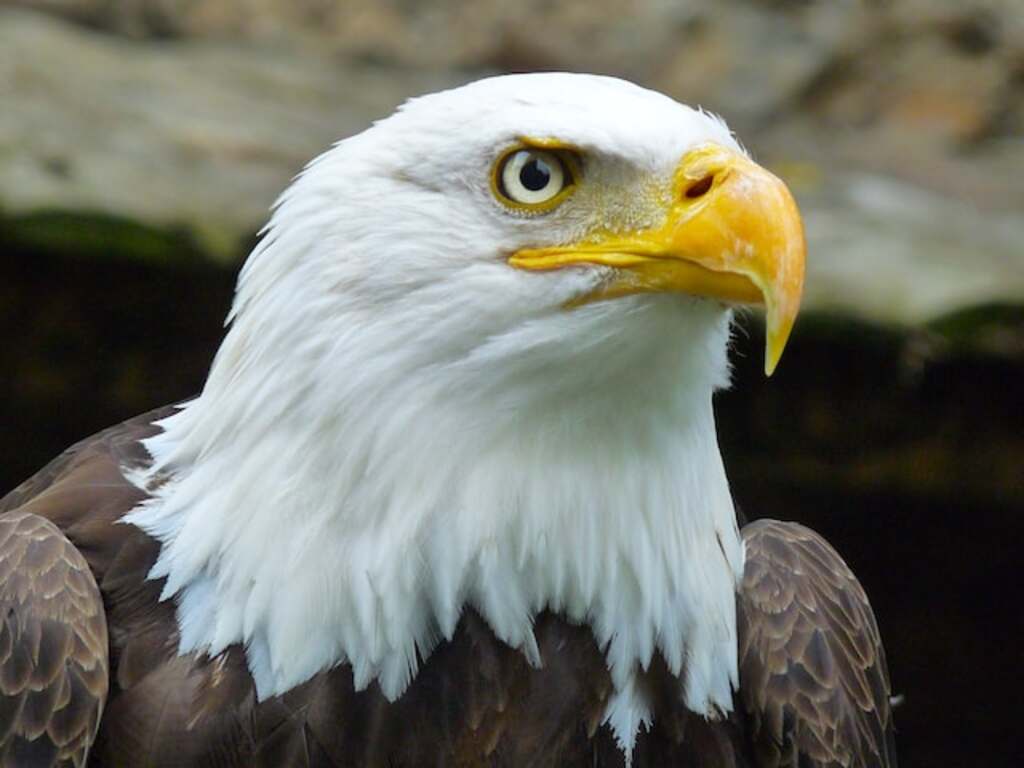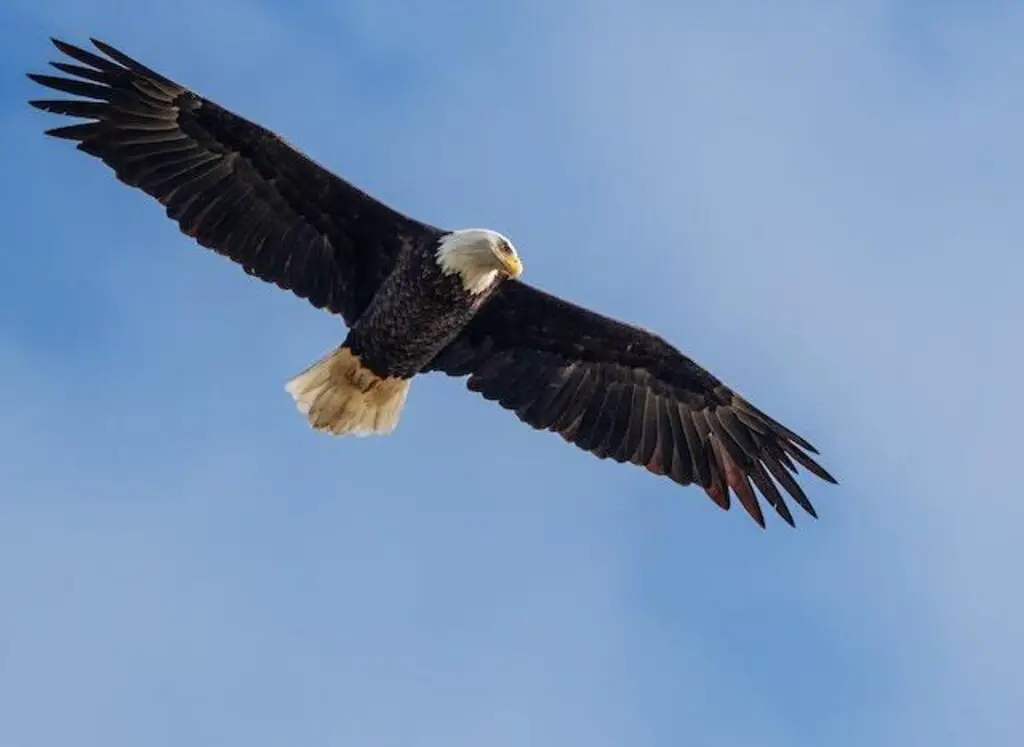What do eagles symbolize? They’re not just birds with an impressive wingspan and a fierce hunting ability. These majestic creatures carry a weighty significance in cultures around the world.
From strength and power to freedom and vision, eagles embody a multitude of symbolic meanings.
So, if you’ve ever wondered why these birds have captured our imagination, buckle up and prepare to soar through the fascinating world of eagle symbolism.
Get ready to uncover the secrets of these regal birds that will leave you feeling uplifted and inspired.
Table of Contents
- 1 The Symbolic Meaning of Eagles
- 2 Eagles as a Symbol of Freedom and Independence
- 3 Eagles as a Symbol of Strength and Power
- 4 Eagles as a Symbol of Spiritual Significance
- 5 Eagles as a Symbol of Leadership
- 6 Lesser-Known Symbolic Meanings of Eagles
- 7 Conclusion
- 8 The Importance of Understanding Eagle Symbolism
- 9 FAQs: What Do Eagles Symbolize?
- 9.1 What does the eagle symbolize in Christianity?
- 9.2 What do eagles symbolize in Native American cultures?
- 9.3 What does the bald eagle symbolize in the United States?
- 9.4 What does the eagle symbolize in ancient Greek mythology?
- 9.5 What do eagles symbolize in Chinese culture?
- 9.6 What does the eagle symbolize in Native American art?
- 9.7 What does the eagle symbolize in Egyptian mythology?
- 9.8 What do eagles symbolize in literature and poetry?
- 9.9 What does the eagle symbolize in heraldry?
- 10 Author
The Symbolic Meaning of Eagles
Eagles are majestic birds of prey that have captured human imagination for thousands of years. They are celebrated in various cultures and traditions around the world as symbols of freedom, strength, power, and spirituality.
From ancient times to the present day, eagles have been used to represent both physical and metaphysical concepts that are important to humans.

A Brief Explanation of Eagles as a Symbol
Eagles have always been admired for their size, grace, and beauty. Their powerful wingspan and sharp talons make them formidable hunters that can take down prey much larger than themselves.
These qualities have made eagles prominent symbols in many cultures throughout history.
In ancient Greek mythology, the eagle was associated with Zeus, the king of gods. The bird was believed to be a messenger of the gods that could fly between heaven and earth with ease.
In Native American cultures, eagles are regarded as sacred animals that bring healing energy and spiritual guidance.
They are often depicted in religious art wearing feathers or other adornments that symbolize strength and power.
The Importance of Eagles in Various Cultures and Traditions
The symbolic meaning of eagles varies from culture to culture but is always linked to important values or beliefs held by those communities.
In Ancient Egyptian art, for example, eagles were depicted carrying pharaohs’ souls into the afterlife because they were considered protectors or guardians among their people.
Similarly, in Germany during World War II’s Nazi regime emblematic use had a double meaning; it represented both power/sovereignty (taking over power) but also freedom (as it fights against tyranny).
Eagles have been used in this way throughout history, representing both positive and negative aspects of human experience.
In Native American traditions, eagles are highly valued for their medicinal properties and spiritual significance. They are believed to have the power to cleanse the soul and heal physical ailments.
The feathers of eagles are used in rituals for protection, healing, and spiritual guidance.
Eagles also hold a significant place in Christian iconography, as they symbolize resurrection and ascension.
The bird is believed to fly high above earthly concerns, embodying spiritual transcendence and divine grace. Overall, eagles as a symbol has played an essential role in various cultures around the world.
Their significance stretches from ancient mythology to modern-day politics.
Regardless of their context or meaning, however, eagles remain one of the most awe-inspiring creatures on Earth that inspire us all with their beauty, strength, and majesty.

Eagles as a Symbol of Freedom and Independence
Throughout history, eagles have been associated with freedom and independence. Their ability to soar high in the sky, far from the ground, has made them symbolically linked to the idea of freedom.
Eagles are often depicted in art and literature as powerful, free-spirited creatures that are unbound by earthly constraints.
In this section, we will explore some of the historical significance of eagles as symbols of freedom and independence.
Historical significance of eagles as symbols of freedom and independence
The eagle has held a special place in human culture for thousands of years. In Ancient Greece, it was seen as a messenger for the gods and a symbol of divine power.
The Roman Empire adopted the eagle as its national emblem, using it on standards carried into battle by legionaries.
In the United States, which adopted the bald eagle as its national symbol on June 20, 1782, it represents freedom and patriotism. Eagles have also played an important role in Native American cultures throughout history.
Many tribes considered them to be spiritual messengers that could communicate with spiritual beings through their connection to the sky.
The eagle feather is considered a sacred object among many Native American tribes, and is used for ceremonial purposes such as prayers or healing rituals.
In addition to these examples from Western cultures, eagles have also been significant symbols in other parts of the world.
For example, ancient Persians saw eagles as symbolic protectors against tyranny; while for Hindu culture they represent divine enlightenment.
Examples from different cultures that associate eagles with these values
The association between eagles and freedom can be found across different cultures throughout history. Here are some examples:
- In Egyptian mythology, Horus was represented by an eagle, which symbolized his ability to see far and wide.
- The ancient Aztecs believed that eagles were the reincarnations of fallen warriors, who were granted the power to soar above the earth.
- In Chinese culture, eagles are often depicted as symbols of strength, courage, and freedom. They are also considered a symbol of power and victory in battle.
- The Philippine eagle is a national symbol of the Philippines. It represents strength, freedom and independence.
These examples demonstrate how eagles have played an important role in different cultures throughout history as symbols of freedom and independence. Their soaring flight patterns give them a sense of limitless possibility that has inspired people for generations.

Eagles as a Symbol of Strength and Power
The Physical Characteristics that Make Eagles Powerful Animals
Eagles are widely recognized for their remarkable physical strength, which is reflected in their appearance and behavior.
These birds have strong, muscular bodies that allow them to soar at great heights and reach speeds of up to 200 miles per hour when diving toward their prey.
Their sharp talons and beaks enable them to hunt and kill animals much larger than themselves. Additionally, eagles have keen eyesight, which allows them to spot prey from far distances.
One of the most important features that make eagles so powerful is their wingspan – the distance between the tips of their wings when fully extended.
Bald eagles, for example, have a wingspan of up to 7 feet, allowing them to catch strong air currents while flying and travel long distances without expending too much energy.
How This Strength Has Been Translated into Symbolic Meaning in Different Contexts
In many cultures around the world, eagles are revered as symbols of strength and power due to their impressive physical abilities.
For Native American tribes such as the Hopi or Navajo, eagles are considered sacred animals that represent courage, wisdom, and spiritual power.
In Islamic culture, the eagle is revered as a symbol of strength and victory over enemies. Eagle symbolism has also been used in literature throughout history as a way to convey power or superiority.
In Shakespeare’s play “Richard III,” for example, the title character compares himself to an eagle in order to evoke a sense of majesty: “Thus like an eagle o’er his prey / Rouses himself for prey.”
In modern times, eagle symbolism continues to be used as an emblematic representation of strength.
The bald eagle was chosen as the national bird by the United States Congress in 1782 due to its impressive strength and majestic appearance.
The eagle is also used as a symbol by numerous sports teams, including the Philadelphia Eagles football team and the U.S. Olympic Committee.
Eagles are widely recognized for their physical strength and abilities, which have been translated into symbolic meaning in many different contexts throughout history.
Whether representing courage, wisdom or superiority, eagles remain an enduring symbol of power across cultures and time periods.

Eagles as a Symbol of Spiritual Significance
Eagles have been revered as spiritual symbols across various cultures and belief systems for centuries, and many people consider them to be sacred creatures.
In Native American traditions, eagles are regarded as messengers between humans and the divine, and they are believed to possess powerful spiritual qualities that can help people connect with higher realms of consciousness.
Eagles also hold a special place in Christian theology, where they often represent God’s power and might.
Native American Traditions
For many Native American tribes, eagles are considered to be one of the most important animal symbols in their culture.
The bird is often seen as a messenger or mediator between humans and the spiritual world, carrying prayers and messages of hope from one realm to another.
In some traditions, the eagle represents the sun or light, which brings warmth and illumination to darkness.
One example of an eagle’s spiritual significance in Native American culture is found in Lakota tradition.
The Lakota believe that when they pray or make offerings to their ancestors or spirits from nature, eagles serve as messengers who take these offerings up to the Great Spirit.
This act is believed to bring blessings back down upon the people who made the offerings.
In addition, many Native American tribes hold sacred ceremonies that involve eagle feathers or parts of the bird’s body.
These ceremonies are meant to honor not only the eagle but also its spiritual significance for their people.
Christianity
Eagles also hold great symbolic value in Christianity. The bird has often been associated with God’s power and strength because of its ability to soar high above other creatures on earth.
As such, it is used as an emblem for Jesus Christ himself by some Christians.
In addition, throughout Christian history, eagles have been used on crests or coats of arms for bishops or other religious officials.
This symbolizes their position as leaders who help guide people toward spiritual truth and enlightenment.
Other Spiritual Practices
Eagles are revered in many other spiritual practices around the world.
For example, in Hinduism, the eagle is often associated with Vishnu, one of the three main gods of the religion. Vishnu is said to ride on the back of an eagle, which represents his power and might.
Similarly, in ancient Egyptian mythology, eagles were often depicted as protectors of royalty or powerful gods. This symbolized their ability to watch over and safeguard those who were most important to them.
Overall, eagles have played a significant role in many different cultures and belief systems throughout history, serving as powerful symbols of spirituality and connection with higher realms of consciousness.
Whether through Native American traditions or Christianity or other spiritual practices across the world, eagles continue to hold great importance for many people today.

Eagles as a Symbol of Leadership
The Association between Eagles and Leadership Qualities
Eagles have long been associated with leadership qualities, such as vision, courage, and determination. Their keen eyesight and ability to soar great heights symbolize a leader’s ability to see the big picture and rise above challenges to achieve their goals.
Additionally, eagles possess powerful talons that allow them to grasp firmly onto prey or objects, which can be seen as a metaphor for a leader’s determination in holding onto their vision or objectives.
Eagles are also known for their strength and fearlessness.
They are willing to take on even the most formidable prey in order to feed themselves or their young, demonstrating their tenacity in the face of adversity.
This resilience is an important quality for any leader who wishes to overcome obstacles and succeed in achieving their goals.
How Eagle Symbolism Has Been Used in Political Contexts
The United States is perhaps the most well-known example of how eagle symbolism has been used in political contexts.
The bald eagle is the national bird of the United States and has been used on numerous official emblems, including the Great Seal of the United States.
It is often seen as a symbol of American patriotism, freedom, and strength.
In other parts of the world, eagles have also been used as symbols of leadership. In ancient Rome, for example, eagles were carried into battle by legionary soldiers to signify Rome’s military might.
In modern times, many countries incorporate eagles into their official emblems or flags as symbols of national pride or power.
Beyond politics, eagle symbolism has also been used by business leaders seeking to inspire their employees with visions of success and achievement.
Many companies use eagle imagery in advertising campaigns or corporate logos to associate themselves with these positive qualities.
Overall, it is clear that eagle symbolism remains a powerful and enduring symbol of leadership, embodying qualities such as vision, courage, determination, strength, and resilience.
Lesser-Known Symbolic Meanings of Eagles
Fierce Protector in Egyptian Mythology
While eagles have been associated with strength and power across many cultures, they take on a unique role in ancient Egyptian mythology.
According to legend, the god Horus was sometimes depicted as an eagle or a falcon.
Horus was known as a fierce protector of the pharaohs and his followers, and his eagle form symbolized his ability to see into both this world and the afterlife.
In this sense, eagles were seen as powerful guardians who could protect their charges from any danger.
Divine Messenger in Hinduism
In some Hindu traditions, eagles are seen as divine messengers who carry messages between the gods and humans.
The most famous example of this is Garuda, a giant eagle-like creature who is said to be the mount of Lord Vishnu.
In addition to carrying messages for the gods, Garuda also has tremendous strength and can fly at incredible speeds. This makes him a powerful symbol of both spiritual connection and physical prowess.
Fertility Symbol in Aztec Culture
While many cultures view eagles as symbols of war or protection, the Aztecs saw them as symbols of fertility.
Specifically, they believed that eagles were representative of Huitzilopochtli, their god of war and agriculture.
According to legend, Huitzilopochtli himself was born when an eagle swooped down from heaven and impregnated a young woman named Coatlicue.
As such, eagles became associated with fertility rituals such as human sacrifice.
Cultural Hero in Pacific Northwest Native American Traditions
Eagles have always held great significance for many Native American cultures across North America. However, perhaps no culture holds them in higher esteem than those of the Pacific Northwest.
To these tribes, eagles were seen as powerful cultural heroes who embodied strength, wisdom, and leadership.
They were often depicted in totem poles and other art forms, and were even traded as valuable commodities between different tribes.
Symbol of Resilience in Australian Aboriginal Culture
In many Aboriginal cultures in Australia, eagles are viewed as symbols of resilience and endurance. This is due to their incredible hunting prowess and ability to adapt to a wide range of environments.
Eagles were often used in initiation ceremonies for young men, symbolizing the need for persistence and determination even in the face of adversity.
They also appear frequently in traditional artwork as symbols of courage and tenacity.

Conclusion
Throughout history, eagles have taken on a wide variety of symbolic meanings across many different cultures.
While they are most commonly associated with strength and power, they have also been seen as protectors, messengers, fertility symbols, cultural heroes, and more.
By understanding these lesser-known interpretations of eagle symbolism, we can gain a greater appreciation for the depth and complexity behind this powerful creature’s meaning throughout history.
The Importance of Understanding Eagle Symbolism
Symbolic Meanings of Eagles in Different Cultures
Throughout history, eagles have been revered as symbols of freedom, power, strength, and leadership. These symbolic meanings are not limited to one culture or tradition but span across many different societies and belief systems.
From ancient civilizations to modern-day political emblems, eagles continue to hold a significant place in our collective consciousness.
By examining the historical and cultural significance of eagle symbolism, we gain a deeper understanding of how these majestic birds have influenced human society.
Studying the ways eagles have been depicted in art and literature, for example, can reveal insights into the values and beliefs held by different cultures at different times.
Eagles as Symbols of Freedom
One of the most prominent symbolic meanings associated with eagles is freedom. This is evidenced by the fact that many countries have chosen the bald eagle as their national emblem.
The bald eagle has also been used as a symbol for freedom in international organizations like NATO. Understanding why eagles are associated with freedom can help us appreciate this value more deeply.
For example, eagles are known for their ability to soar high into the sky without being bound by earthly constraints. In this way, they represent a sense of liberation from limitations.
Eagles as Symbols of Power and Strength
Another important symbol associated with eagles is power and strength. This is because these birds possess incredible physical attributes that allow them to hunt prey much larger than themselves.
Additionally, many cultures associate eagles with spiritual power or divine favor.
Understanding these symbolic meanings can give us greater insight into why people might turn to images or representations of eagles when seeking strength or protection in their own lives.
Eagles as Symbols of Leadership
Eagles are often associated with leadership qualities such as vision, courage, and determination.
This is because they are able to survey their surroundings from a high vantage point and strike with precision when the opportunity arises.
By studying eagle symbolism in leadership contexts, we can better understand the characteristics that are valued in leaders across different cultures and time periods.
This can help us develop our own leadership skills and become more effective leaders in our own lives.
The Importance of Cultural Significance
Understanding eagle symbolism is important for appreciating the cultural significance of these magnificent birds.
By examining the various ways eagles have been depicted and interpreted throughout history, we can gain greater insight into the values and beliefs held by different societies.
Whether we see eagles as symbols of freedom, power, strength, or leadership, they continue to inspire us with their majesty and grace.
By appreciating these symbolic meanings on a deeper level, we can cultivate a richer understanding of our shared human experience.

FAQs: What Do Eagles Symbolize?
What does the eagle symbolize in Christianity?
In Christianity, the eagle is often associated with spiritual strength, resurrection, and the divine. It represents the exalted nature of God, His power, and His ability to uplift and protect His followers.
What do eagles symbolize in Native American cultures?
Eagles hold significant cultural and spiritual symbolism in Native American cultures. They are seen as messengers from the spiritual realm, symbolizing courage, wisdom, and connection to the divine. Eagles are revered as powerful and majestic beings.
What does the bald eagle symbolize in the United States?
The bald eagle is the national bird and symbol of the United States. It represents freedom, independence, and resilience. The bald eagle’s majestic presence and soaring flight embody the spirit and ideals of the nation.
What does the eagle symbolize in ancient Greek mythology?
In ancient Greek mythology, the eagle was associated with Zeus, the king of gods. It represented strength, power, and divine authority. The eagle was often depicted as Zeus’ companion or messenger, emphasizing its connection to the divine realm.
What do eagles symbolize in Chinese culture?
In Chinese culture, the eagle symbolizes nobility, bravery, and victory. It is considered a symbol of power and strength, associated with emperors and high-ranking officials. The eagle’s soaring flight is seen as a metaphor for success and achievement.
What does the eagle symbolize in Native American art?
In Native American art, the eagle is a popular subject and symbolizes spiritual connection, wisdom, and guidance. It is often depicted in various art forms, such as totem poles, masks, and jewelry, showcasing its revered status in Native American traditions.
What does the eagle symbolize in Egyptian mythology?
In Egyptian mythology, the eagle was associated with the god Horus, who represented protection and divine kingship. The eagle symbolized vigilance, keen vision, and authority. It was believed to carry the sun god Ra across the sky, connecting it to the cycle of life and rebirth.
What do eagles symbolize in literature and poetry?
In literature and poetry, eagles are often used as symbols of freedom, courage, and ambition. They represent the human desire to soar above limitations, break free from constraints, and reach great heights. Eagles evoke a sense of awe and inspiration in artistic expressions.
What does the eagle symbolize in heraldry?
In heraldry, the double-headed eagle symbolizes power, dominion, and sovereignty. It is often associated with the concept of dual authority or the union of two realms. The double-headed eagle can be found in various heraldic traditions, representing the grandeur and strength of the ruling entity.



